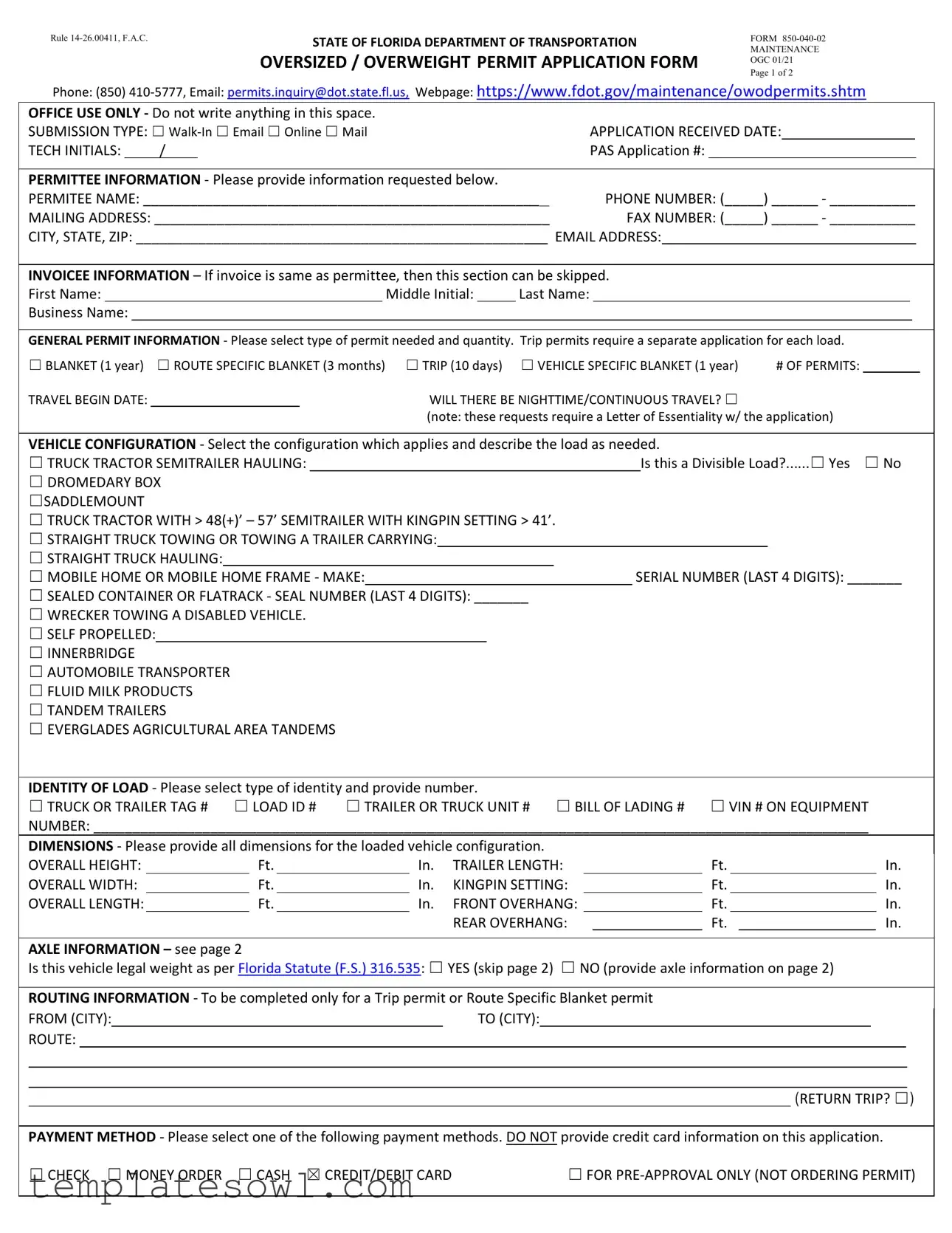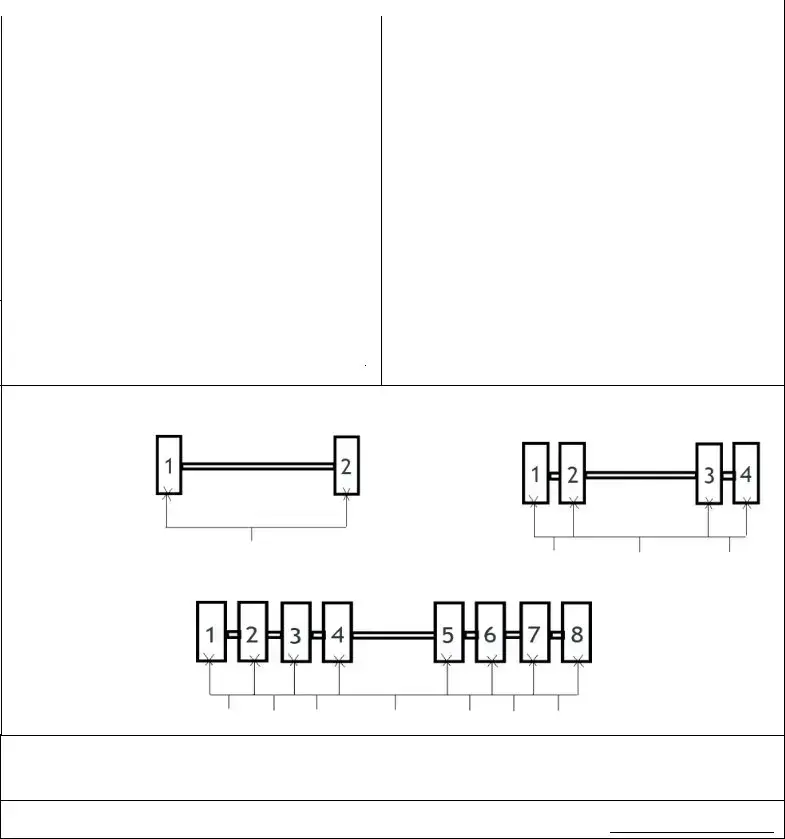Completing the 850-040-02 form can be straightforward, yet many people encounter common pitfalls that may delay the permit approval process. One major mistake is failing to select the correct type of permit needed. Applicants often overlook the distinction between a trip permit, which is valid for a limited duration, and a blanket permit, which covers a specific vehicle configuration for a longer period. Selecting the wrong option can lead to complications later on.
Another frequent error is inconsistent or incomplete contact information. Whether it’s the permittee's name, phone number, or email address, inaccuracies can hamper the communication process. A valid mailing address, with all components filled out accurately, is crucial; otherwise, important notifications or documents may not reach the applicant.
Furthermore, many individuals neglect to specify the payment method clearly. The options available—check, cash, money order, and credit card—should be marked correctly. Omissions or incorrect selections can lead to the application being stalled or returned.
Travel route details are critical yet often mismanaged. Applicants may rush through this section, providing vague or incomplete route information. A well-delineated route is essential to ensure compliance and avoid potential fines. In some instances, travelers may also forget to indicate if a return trip is needed, which can result in an incomplete application.
Another common mistake involves vehicle configuration. Applicants may fail to accurately describe the load or skip indicating whether the load is divisible. This detail is particularly significant as it can affect the kind of permit issued, and omitting information here could land the applicant in trouble with regulatory authorities.
When it comes to truck dimensions, accuracy is paramount. Often, individuals misreport measurements, either confusing feet with inches or providing approximations instead of exact figures. The dimensions of the vehicle must be clear, as inaccuracies can lead to denied permits or even fines for operating outside legal limits.
In the axles section, a common oversight is failing to provide adequate documentation for each axle’s configuration and weight. Incomplete or incorrect details here can render a permit non-compliant. Additionally, applicants sometimes forget to count all axles, which can significantly impact the permit application.
Often, applicants overlook the necessity for the identity of the load to be explicitly stated. Whether using a truck or trailer tag number or a bill of lading number, missing this information can lead to delays. The lack of clarity about the load identity makes it difficult for authorities to process, putting the application at risk.
In summary, those filling out the 850-040-02 form can benefit from careful attention to detail. By avoiding these frequent mistakes, applicants can streamline the process, enhance communication with authorities, and ultimately secure their permits with far fewer delays.


